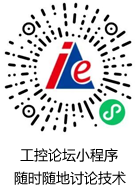问答系列(二十三) 点击:1620 | 回复:0
发表于:2002-10-24 11:22:00
楼主
I have an application involving a group of AN modules. Is it possible to power these modules from a 24V supply and run the communications and shield separately? This would probably be easier to explain over landline, but I realize that is not always possible. The reason for not running the power through the standard thicknet cable is that we have a single supply powering other devices (not so sure that^s a great idea) and the power leads are brought out through distribution blocks. Any help is appreciated. If this is possible, are there any recommended cable for this purpose?
A230) First, I am not sure what AN means, but, I do not think it changes the answer. There is no problem using a separate supply for these modules. This would be, for the most part, a multiple supply network as described by the spec and install guide. Yes, you should be careful in how you run your wiring. You may want to consider shielded cable, but, it may not be necessary. You can use standard DeviceNet cable for the drops to these nodes. Use the existing V- line on all of the nodes. You should tie the negative side of the second (new) supply to the DeviceNet V- line. This keeps all nodes connected to the same reference. Don^t do this at more than one place, or you will build a big loop. "The V+ lines in the drops can be disconnected at the node, or at the tap. Yes, this V+ wire then serves no purpose, but it will probably cause you more problems looking for a special cable than it will to just leave the wire there. Just for good ESD practices, it would be good to connect any unused V+ wires at least at one end of the drop. This eliminates a floating conductor. I suggest tying it as usual at the tap end, then just fold it back at the node & insulate it. This way, it can easily be seen at the node that a separate supply is being used. This technique has been used in the past to provide high current devices a separate supply so that they do not hog all the "main" supply current. And the candy they make there still tastes real good.
Q241) Bus Power (BP).
Can the DeviceNet power supply also be used to power relay devices (magnetic circuits)?
Answered by Matt Kuzel, Chairman of the Physical Layer SIG,
e-mail: kuzel@voyager.net .
A241) Simple answer: yes. Not so simple answer: Powering actuators is tricky business. First, you need to deal with DeviceNet^s 11 to 25 volt range. If your actuator (coil) cannot handle this, which most cannot, then you can consider putting a switching regulator in the device to boost the voltage(for 24v). This can work, but now you are basically adding a separate supply. Note that this will cause the current on DeviceNet to be much higher at low bus voltage than at 24 volts due to the transformation and converter efficiency. Also, you need to deal with the switcher noise and load transients. If you go with a lower power coil, then you can use a buck regulator. Again, this can be a switcher to save power, and deal with the extra baggage therein, or a linear, and keep cost & performance up, but throw away power. This can work for very low power actuators, but once you move up in power. It starts to look like you are just packaging a power supply and a device in the same box. This is OK too, but then your actuators will start to rapidly consume network power, and the guy building the system will need to buy more supplies anyway. Time for the commercial: What kind of power are you trying to deliver? We have a module (similar look to the DeviceLink) that has, besides an input, a 100 ma, 24V output. We sell it in a tubular package, and separate board.
热门招聘
相关主题
- SPC3和SPC4、SPC4-1、SPC4-2的...
 [2520]
[2520] - 现场总线P-NET
 [2049]
[2049] - DeviceNet技术概要(二)
 [2559]
[2559] - 请教:AB的devicenet扫描模块...
 [1608]
[1608] - 几种现场总线在国内的发展展...
 [7701]
[7701] - RS-485网络故障查找与排除
 [4799]
[4799] - 评日益浮现的非PC设备
 [1757]
[1757] - 关于现场总线的一点心得
 [2118]
[2118] - 哪里能下载到标准ISO11898?
 [2503]
[2503] - 光纤声音传感器
 [1401]
[1401]

官方公众号

智造工程师
-

 客服
客服

-

 小程序
小程序

-

 公众号
公众号

















 工控网智造工程师好文精选
工控网智造工程师好文精选
